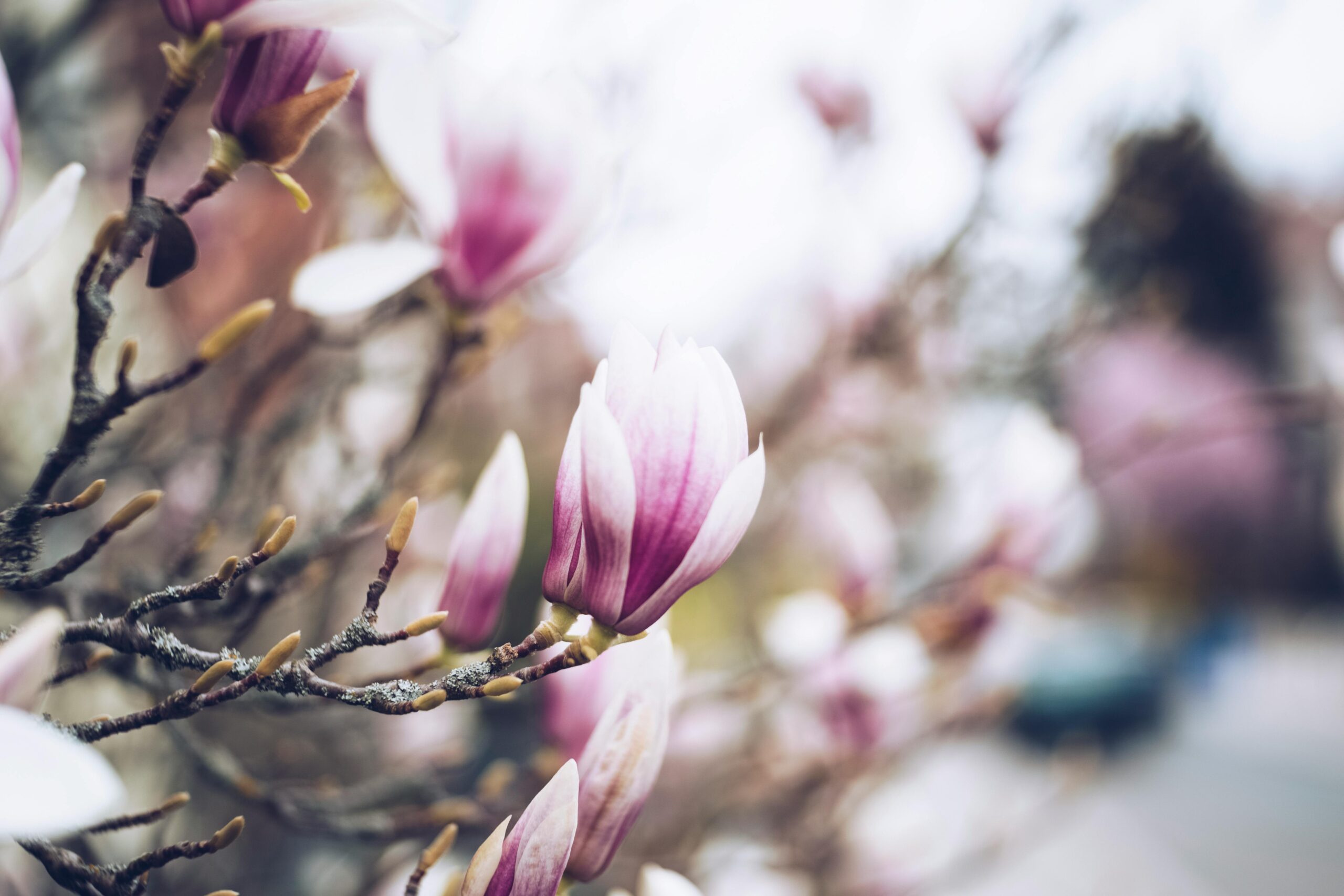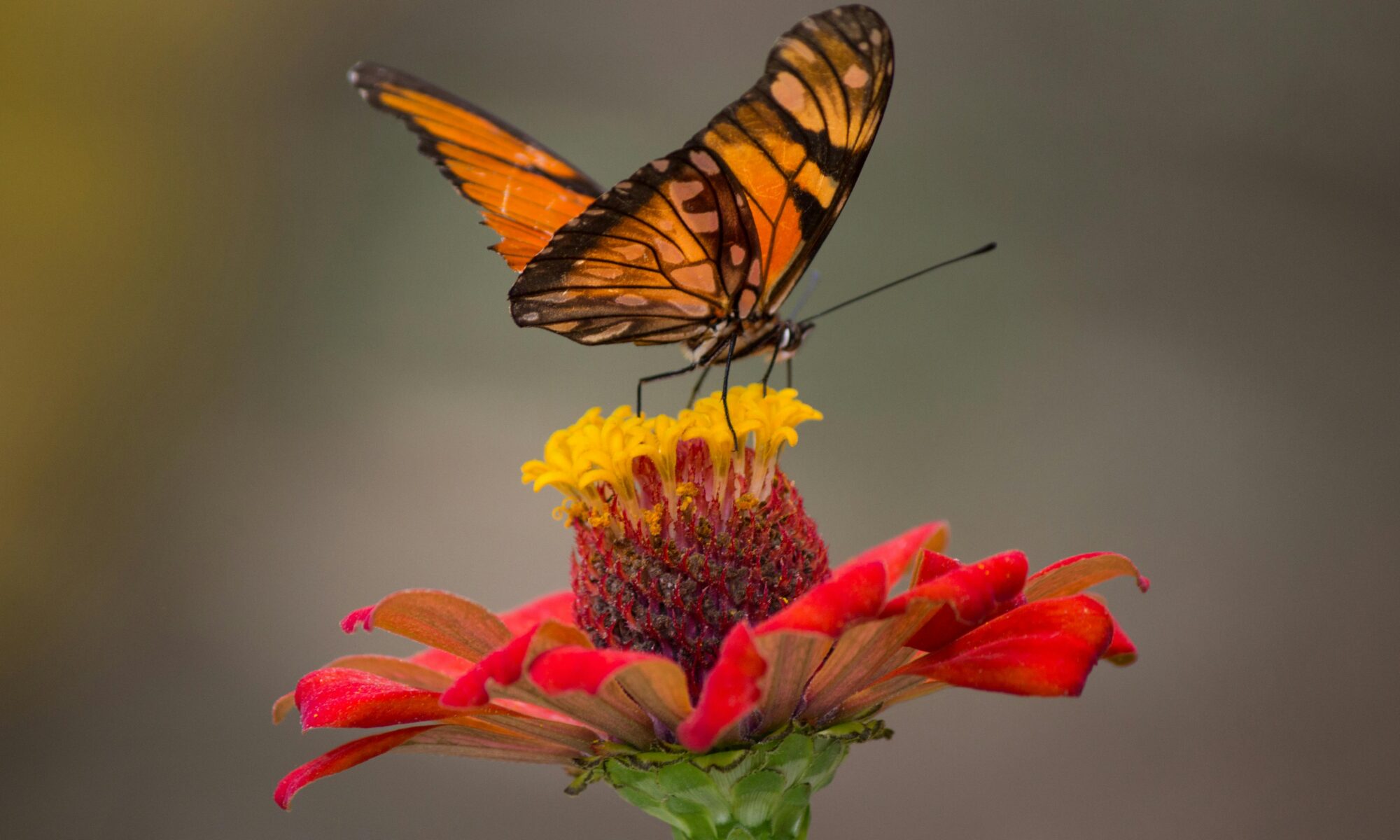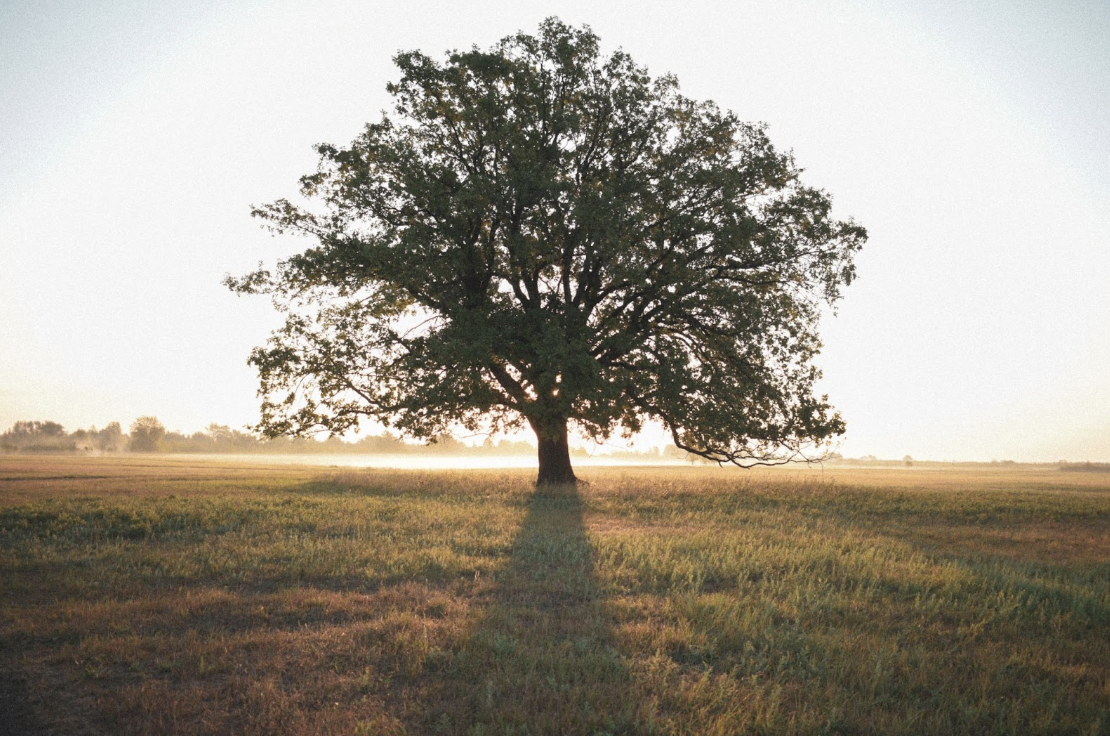As the days lengthen and the chill fades, spring bursts forth in a vibrant display of color. But beyond the aesthetic, this season brings an essential opportunity to support the vital dance between pollinators and flowering plants.
This blog is your guide to creating a haven for these tiny yet crucial creatures. We’ll explore a variety of spring-blooming trees that not only grace your landscape with stunning blooms but also provide a valuable source of nectar and pollen for bees and butterflies.
Get ready to welcome the delightful hum of bees and the flutter of butterfly wings as we delve into the world of these springtime pollinating partners.
A World Less Busy: Our Pollinators’ Plight
While the sight of a bee flitting from flower to flower or a butterfly gracefully dancing on the breeze brings joy, the reality for these essential creatures is far from idyllic. Pollinator populations, particularly bees and butterflies, are facing a steep decline due to several significant threats:
- Habitat Loss: Urbanization, deforestation, and agricultural practices have drastically reduced the availability of natural areas with diverse flowering plants, crucial for providing food and nesting sites.
- Pesticide Use: Widely used insecticides and herbicides often harm not just target pests but also beneficial insects like pollinators, impacting their survival and reproduction.
- Climate Change: Rising temperatures can disrupt flowering times, leaving pollinators with a shortage of food sources. Additionally, extreme weather events can devastate fragile habitats.
- Disease and Parasites: The spread of diseases and parasites can weaken pollinator colonies, further contributing to population decline.
These challenges paint a concerning picture for the future of not just these fascinating creatures, but also for the delicate balance of our ecosystems.
Why Do We Need Pollinators?
Pollinators – busy bees, butterflies, beetles, birds, and bats – work tirelessly behind the scenes to ensure our food security and a thriving environment.
Here’s why these seemingly little creatures hold immense importance:
Every Third Bite
An astounding one out of every three bites of food we enjoy depends on animal pollination. From the fruits and vegetables that fill our markets to the coffee that jumpstarts our mornings, countless crops rely on the transfer of pollen by these ecological workhorses.
Beyond the Plate
Pollinators play a vital role in the health of entire ecosystems. Wildflower meadows and natural landscapes flourish with their help, providing food and habitat for countless other species. This intricate web of life supports the natural world’s balance and resilience.
A Sustainable Future
A healthy pollinator population is fundamental for a sustainable future. By ensuring their survival, we contribute to a diverse and productive environment, safeguarding food security and the well-being of the planet for generations to come.
Pollinators are the cornerstone of a functioning food system and a healthy planet. Their presence signifies a thriving environment, and their decline is a stark reminder of our dependence on nature’s delicate balance.
Why Spring-Blooming Trees?
Spring-blooming trees are vital beacons for bees and butterflies emerging from their winter slumber. As the harsh winter subsides and the world slowly awakens, these early bloomers provide a critical source of sustenance when other food sources are scarce.
Early Spring Feast
Imagine waking up famished after a long winter. For bees and butterflies, the first blooms of spring are a life-saving source of energy. Spring-blooming trees offer a much-needed source of nectar (a sugary solution) for immediate energy and pollen (rich in protein and fats) to support growth and reproduction.
A Bridge Between Seasons
While spring brings renewed life, the full flush of flowers typically takes some time. Spring-blooming trees bridge this gap, ensuring a consistent source of food for pollinators as they rebuild their strength and initiate new colonies.
By providing these essential resources at a crucial time, spring-blooming trees play a foundational role in supporting pollinator populations.
Best Spring-Blooming Trees for Bees and Butterflies
Here are some exceptional spring-blooming tree options to consider for your pollinator haven:
1. California Lilac (Ceanothus)
Description
This vibrant California native shrub explodes with clusters of blue, purple, or white flowers in the spring, attracting a variety of pollinators like bees, butterflies, and hummingbirds.
They are relatively low-maintenance and drought-tolerant once established, making them a perfect choice for California’s climate.
Region
California Lilac (Ceanothus) is native to western North America, with over 50 species found primarily in California and surrounding areas.
They thrive in USDA zones 5 to 9, which encompasses most of California except for the coldest high-altitude regions.
Pollinator Benefits
California Lilacs are a valuable source of nectar and pollen for a variety of pollinators. Their small, numerous flowers are packed with pollen and easily accessible to bees, butterflies, and hummingbirds.
Planting Tips
California Lilacs prefer full sun but can tolerate partial shade. They thrive in well-drained soil, adapting to various soil types including rocky and clay soils. Water deeply during the first year after planting to encourage root development. Once established, they are drought-tolerant and require minimal supplemental watering, and prune lightly after flowering to maintain the desired shape and remove dead or diseased branches. Deadheading spent flowers throughout the blooming period can encourage continuous blooming.
2. Chitalpa (Chitalpa tashkentensis ‘Pink Dawn’)
Description:
Chitalpas are small, deciduous spring-blooming trees typically growing 20-35 feet tall with a rounded crown. They is known for their beautiful, trumpet-shaped flowers that bloom in clusters throughout the spring, summer, and even into fall. The flowers are a pale lavender-pink with a pale yellow throat, and the leaves are long and narrow. The tree has a multi-stemmed, spreading habit.
Region
Chitalpa tashkentensis ‘Pink Dawn’ is a hybrid tree resulting from the crossing of Chilopsis linearis, a flowering tree native to the southwestern United States and northern Mexico, and Catalpa bignonioides, commonly known as the northern catalpa, which is native to the southeastern United States and the lower Mississippi Valley. As a result of this heritage, the Pink Dawn Chitalpa is well-suited for planting in USDA Zones 6 to 9, which encompasses much of the southern and central United States.
Pollinator Benefits
The Pink Dawn Chitalpa attracts butterflies, hummingbirds, and bees with its nectar-rich flowers.
Planting Tips
The Pink Dawn Chitalpa prefers full sun and well-drained soil. It is drought-tolerant once established, but regular watering is recommended during the first year after planting. The tree is relatively low-maintenance and does not require much pruning. However, it can be pruned in late winter or early spring to shape the tree or remove any dead or diseased branches.
3. Saucer Magnolia (Magnolia soulangeana)
Description
A popular flowering spring-blooming tree known for its large, showy blooms in early spring. These blooms, often described as looking like “saucers” or “goblets,” come in various shades of white, pink, and purple depending on the specific cultivar. Saucer Magnolias are typically deciduous, meaning they lose their leaves in the fall. The trees have dark green, leathery leaves that provide a nice contrast to the showy flowers and smooth, silver-gray bark. Mature trees can reach 20-30 feet tall with a rounded canopy, making them a statement piece in any landscape.
Region
Saucer Magnolias (Magnolia x soulangeana) are a hybrid resulting from the crossing of two magnolia species native to East Asia. Despite their Asian origin, Saucer Magnolias are well-adapted to various climates and can thrive in USDA zones 4 to 9. This zone range stretches from the southern parts of Canada and the northern United States down to the northern regions of Florida, Texas, and California.
Pollinator Benefits
Saucer Magnolias’ large, fragrant flowers offer nectar and pollen, attracting these beneficial insects and aiding in the fertilization of other plants in the surrounding area.
Planting Tips
Saucer Magnolias prefer well-drained, slightly acidic soil with full sun to partial shade. When planting, it’s crucial to choose a location that provides enough space for the tree to reach its mature size. Water your Saucer Magnolia regularly, especially during the first year after planting, to help it establish a strong root system. Once established, these trees are relatively low-maintenance and drought-tolerant. Minimal pruning is required, focusing on removing dead, diseased, or damaged branches in late winter or early spring to maintain the desired shape.

4. Desert Peach (Prunus andersonii)
Description
A small, deciduous tree typically growing 15-25 feet tall with a rounded to spreading canopy. Unlike its namesake, the Desert Peach does not produce edible fruit. However, it boasts vibrant pink or white flowers with a single central stamen, blooming abundantly in spring and sporadically throughout summer. The narrow, glossy green leaves provide a pleasant contrast to the showy blossoms.
Region
Native to the dry, mountainous regions of Central Asia, the Desert Peach is well-suited for hot, arid climates. It thrives in USDA zones 5 to 9, tolerating temperatures ranging from -20°F (-29°C) to 100°F (38°C).
Pollinator Benefits
The Desert Peach attracts a variety of pollinators, including bees, butterflies, and even hummingbirds, with its nectar-rich flowers.
Planting Tips
Desert Peach spring-blooming trees prefer full sun and well-drained, sandy soil. Due to their drought tolerance, they require minimal watering once established. Regular watering is recommended only during the first year after planting to encourage root development. These trees are generally low-maintenance and require minimal pruning. Light pruning in late winter or early spring can be done to remove dead or diseased branches and maintain the desired shape.
Get Ready for Spring
As the curtain of winter lifts, spring ushers in a symphony of color and life, transforming the barren landscape into a lush, vibrant canvas. This renewal is not just a feast for our eyes but a vital chapter in the ongoing story of our planet’s ecological balance. The role of bees and butterflies in this narrative cannot be overstated, as they carry out the critical task of pollination, ensuring the propagation of countless plant species and, by extension, the survival of many ecosystems.
Yet, as we’ve explored, these essential pollinators face mounting challenges. Habitat loss, pesticide exposure, climate change, and disease threaten their numbers and, with them, the intricate web of life that sustains our natural world and our food supply. In this context, the simple act of planting spring-blooming trees becomes a powerful gesture of stewardship towards these tiny yet pivotal creatures.
The California Lilac, Chitalpa, Saucer Magnolia, and Desert Peach stand out not only for their beauty but for their role as early-season lifelines for pollinators. By choosing these or similar trees for our gardens and communities, we offer nourishment and refuge to bees and butterflies when they most need it. Furthermore, we enrich our surroundings, creating landscapes that buzz with life and flutter with color.
In closing, we extend a call to action not just to plant these vital spring-blooming trees but to consider the overall health of your garden and green spaces. Sexy Trees tree care services are here to assist you in nurturing a thriving, pollinator-friendly landscape.
From selection and planting to ongoing maintenance, our expertise ensures that your garden not only looks its best but also serves as a bastion for bees, butterflies, and other beneficial wildlife. Together, let’s create oases of biodiversity that resonate with the buzz of life, ensuring a brighter, more sustainable future for our planet.
 Bringing Sexy Back Into Your Yards
Bringing Sexy Back Into Your Yards 

